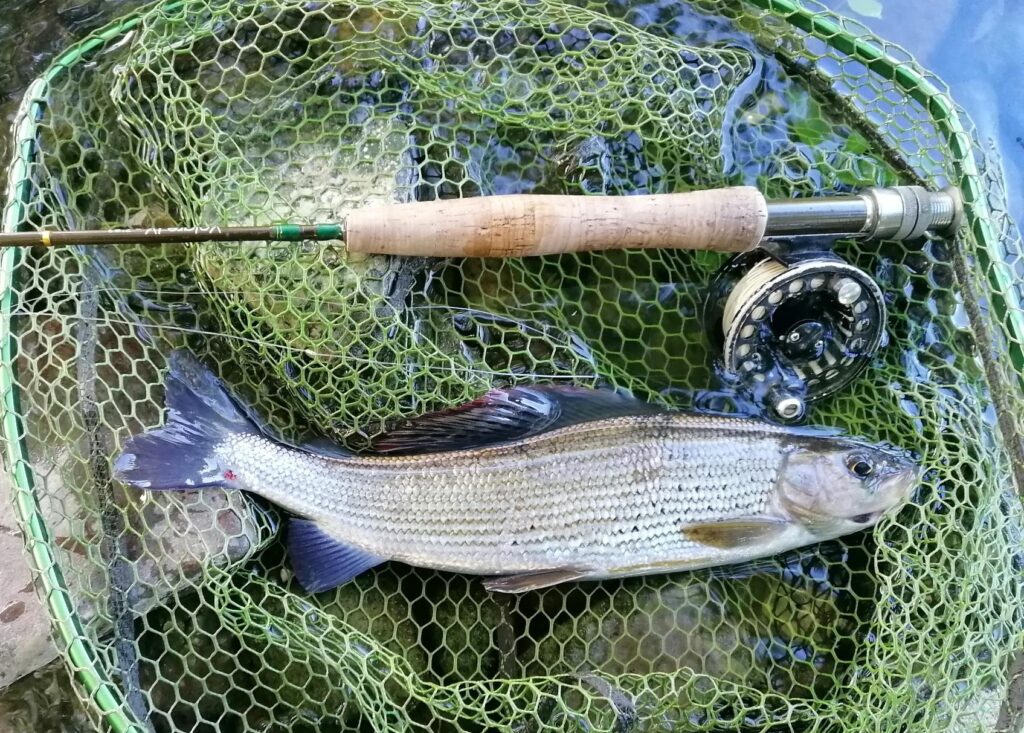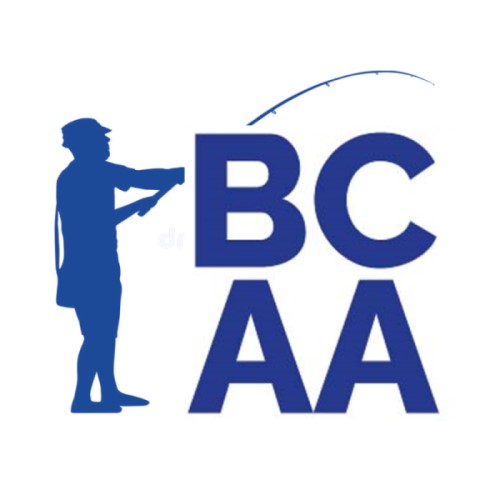Stewarding the Kildwick stetch
Last year the fly sub committee introduced a stewarding scheme on some of its waters, the idea being that members could “adopt” a local water, or one that they fish regularly, and help to maintain it. In effect they would be looking after the water but not have the enforcement responsibilities of a bailiff. If they decided some work required extra bodies, balsam removal perhaps, then a working party could be organised.
Living in Silsden I rather rashly offered to steward our Kildwick beat on the Aire, here is my report of stewarding the Kildwick stretch.
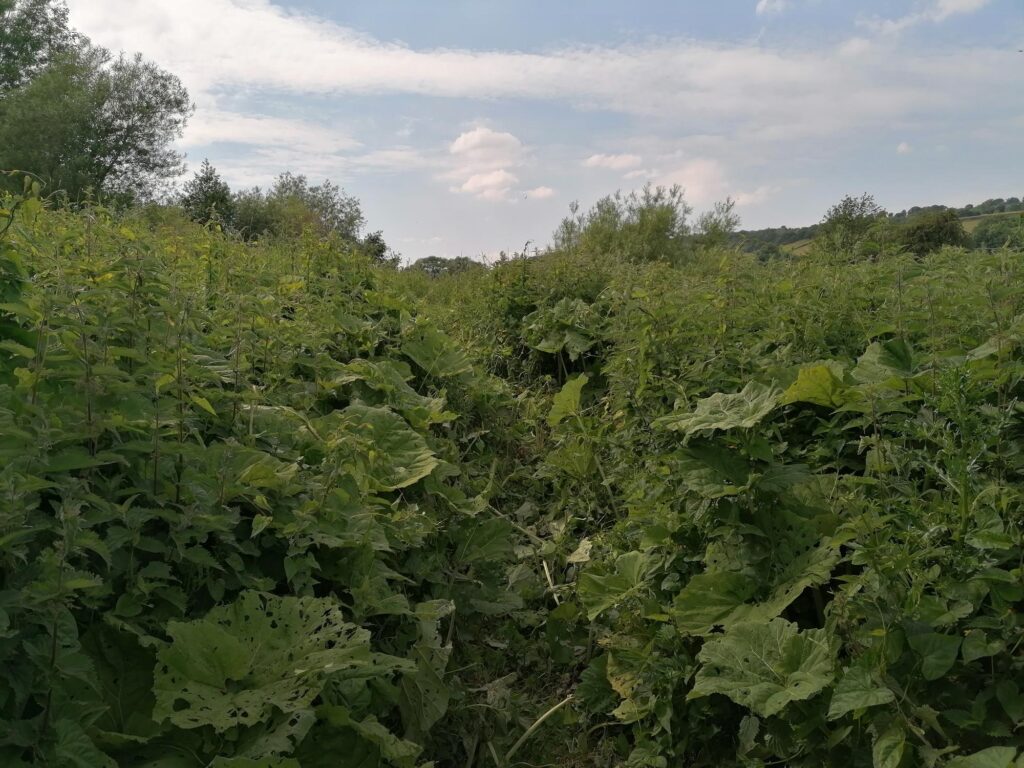
The Kildwick beat runs parallel to the A629 dual carriageway mid way between the Kildwick and Steeton roundabouts. There is a convenient layby at the bottom of the beat and another close to the top, although on the other side of the road. The top limit is the confluence with Eastburn beck, which is bridged by the A629, the lower limit is fairly undefined but is indicated by a culvert which enters the river near the layby.
Those who have fished this stretch and also the Steeton beat will know that the big problems are the dense summer undergrowth and actually getting down the steep banks into the river. Back in early spring 2021 Jon Grey and I cut back the overhanging willow and hawthorn to allow a path from the bottom of the stretch, by the layby to the top at the Eastburn confluence. I also cut some steps in the bank in a couple of places to aid access. This proved to be the easy bit!
Come spring the undergrowth started to flourish bigtime. The main growth being nettles, butter burr and Himalayan balsam. With the very fertile alluvial soil alongside the river the growth can get up to about six feet (my shoulder height). I endeavoured to keep a path clear from top to bottom but in the end had to admit defeat.
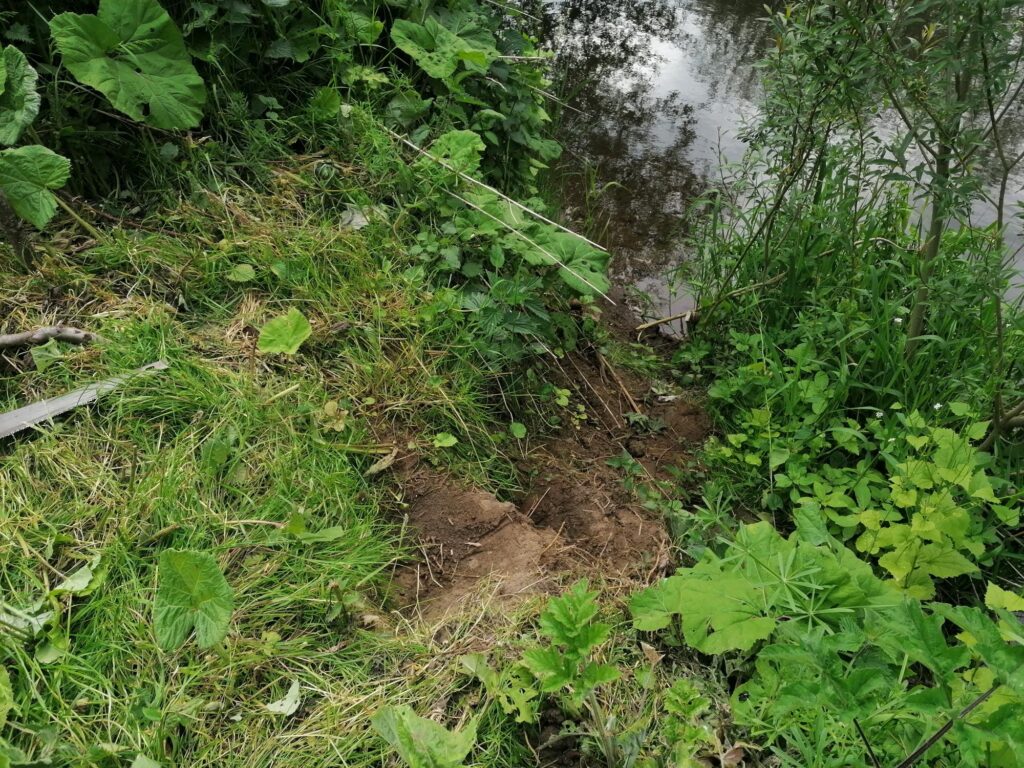
This year I have taken a different tack. I have given up on the full length path but instead concentrated on paths that lead to prime fishing sites. At the bottom end this includes two sets of steps cut into the bank, one close to the layby (much loved by lure fishermen I believe) and another further upstream reached by walking on a cleared path beside willows.
At the top end, which I think gives better fishing, I have cleared a path down the embankment and though hawthorn and dog rose (bad news for waders!) then downstream through the nettle/balsam/butter burr combination to access steps about half way down the main pool. I find the undergrowth needs cutting back every three weeks or so during the summer.
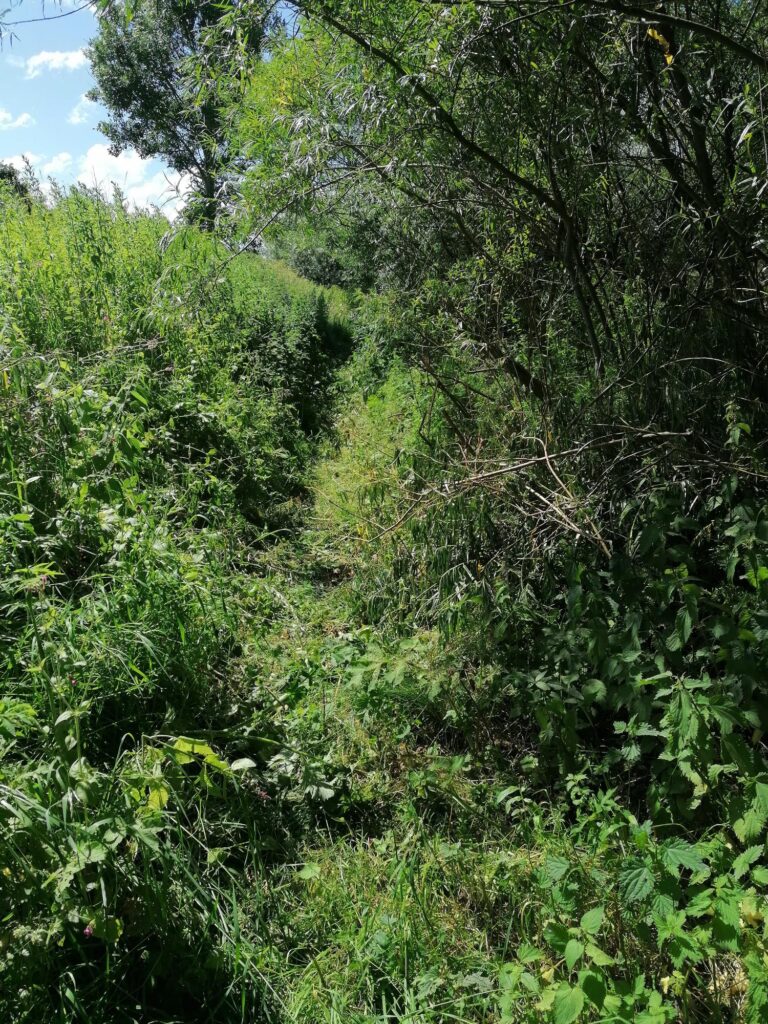
As well as the path maintenance I also check for invasive species, reporting some giant hogweed at the bottom end last year. Also this spring I started off keeping a lookout for the saplings planted during the winter, however the undergrowth is now so high and dense I cannot find them!
I would say that I don’t put in this work purely from a sense of altruism! As I live locally I fish this stretch regularly and find it very productive, especially the top end where I have caught some of my best fish, nice clear paths make my fishing a lot easier.
If you haven’t fished this stretch I would recommend it, there are some cracking fish there, both brownies and grayling, especially at the top end, although be careful if you cross the dual carriageway to get to it. Although this stretch won’t entertain you for the day it is well worth considering for a few hours of an evening perhaps. If you do fish it let me know what you think of the access.
It would be great to hear from others who are stewarding waters or, if you have a neglected BCAA water near you perhaps you could consider giving it some TLC, assuming my account hasn’t put you off.
